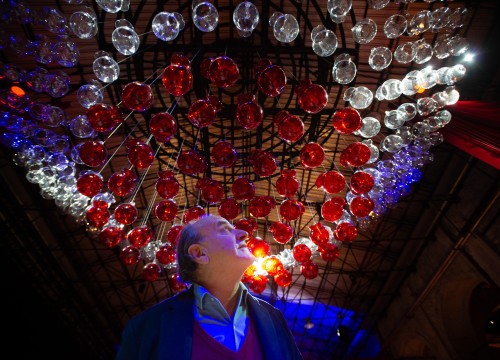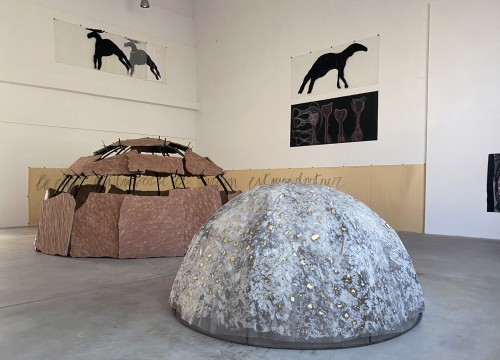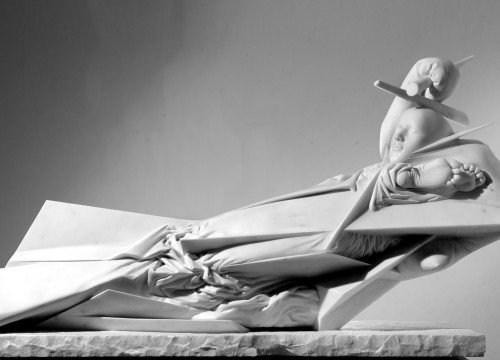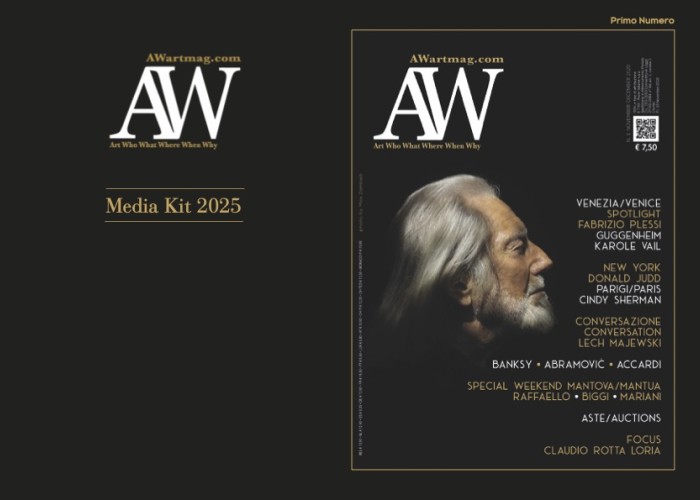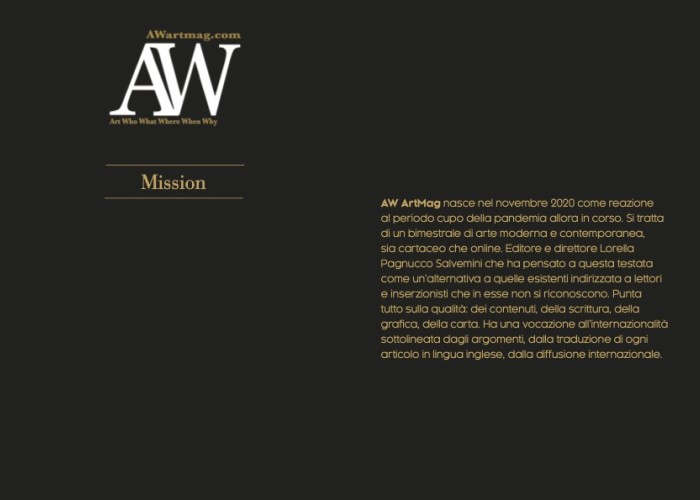Artist from the troubled existential path, both contemporary and anti-contemporary
Carmelo Zotti (Trieste 1933 - Treviso 2007) already at the beginning of his artistic career immediately and incredibly comes to the fore. Just over twenty, he exhibited at two editions of the La Biennale in Venice in 1956 and 1958.
At the beginning of the ‘60s, he tuned in with pop art first, with new figuration then. Let’s think of artworks such as Composition (1961) and Painting (1965). So, a singular and strong narrative impulse will explode in him. This will accompany him in the next decade, when the theme of the couple in crisis conquers a repeated centrality in the canvases.
Just over twenty, already exhibits at two VENICE BIENNALS
Having reached full maturity, he stages a theater of feelings where human figures express a state of tension caused by enigmas not easy to decipher, nor to be solved. These are mythological images—sphinxes and pyramids especially—that seem to divide the thoughts and feelings of man and woman. And a humanoid figure characterized by a long proboscis appears to add further anxiety to the primitive anxiety, since the terror of a thought conquers the body of interpreters.
See in this regard the anguish that permeates La promenade (1972), or the dark eternity that envelops The expectation (1976). Thus, the expressionist impulse, which had previously repeatedly characterized his gesture, now seems to transform into a new and more mysterious symbolic seduction, connected to a recurring atmosphere of dramatic temporal suspension.
In many works draws on mythological images such as the sphinx and the pyramid
“Zotti has plunged voluptuously into the ‘mysterious sea’ of the dechirichian enigma,” will write not by chance Paolo Rizzi in 1971. In the 1980s, a visionary approach was accentuated, translated into Nordic landscapes and Munchian atmospheres (Marco Goldin). This is evident in the harsh narrative contrasts that mark paintings such as Swimmer and lighthouse (1986).
Moreover, the move to Venice will put him in direct contact with the greats of the ‘500—Tintoretto and Veronese, mainly—from which he will draw further inspiration. And it is precisely as a result of these latter suggestions that paintings of modulated refinement such as Naked sitting (1984) and Temptation (1989) will be born.
In his canvases, enigmatic and indecipherable human figures
Later, Zotti will arrive at a light gesture where ritual and myth, to say it with Dorfles, meet and sometimes melt in the landscape: Angel alone (2003).
Artist from a troubled existential path, he will not fail to investigate the personal inner world through the fascination transmitted by travels: Mexico, Holland, Portugal, Andalusia, Cairo, New York. He breathes everything, stirs everything. He takes the brush into the memory of places, history, and myth: anti-contemporary and contemporary together, hence his greatness.
Ora è più leggibile e scorrevole.











